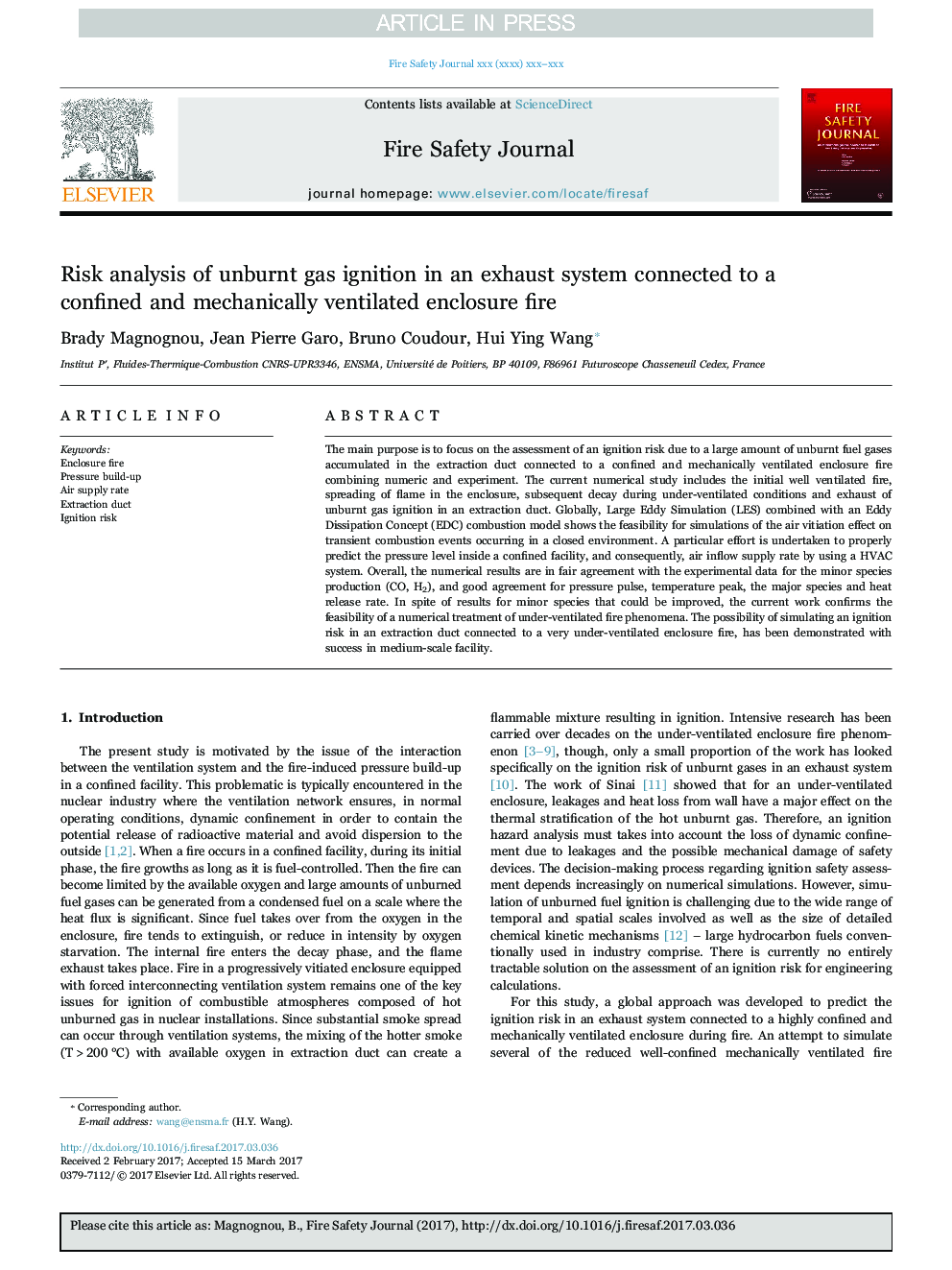| Article ID | Journal | Published Year | Pages | File Type |
|---|---|---|---|---|
| 4920909 | Fire Safety Journal | 2017 | 12 Pages |
Abstract
The main purpose is to focus on the assessment of an ignition risk due to a large amount of unburnt fuel gases accumulated in the extraction duct connected to a confined and mechanically ventilated enclosure fire combining numeric and experiment. The current numerical study includes the initial well ventilated fire, spreading of flame in the enclosure, subsequent decay during under-ventilated conditions and exhaust of unburnt gas ignition in an extraction duct. Globally, Large Eddy Simulation (LES) combined with an Eddy Dissipation Concept (EDC) combustion model shows the feasibility for simulations of the air vitiation effect on transient combustion events occurring in a closed environment. A particular effort is undertaken to properly predict the pressure level inside a confined facility, and consequently, air inflow supply rate by using a HVAC system. Overall, the numerical results are in fair agreement with the experimental data for the minor species production (CO, H2), and good agreement for pressure pulse, temperature peak, the major species and heat release rate. In spite of results for minor species that could be improved, the current work confirms the feasibility of a numerical treatment of under-ventilated fire phenomena. The possibility of simulating an ignition risk in an extraction duct connected to a very under-ventilated enclosure fire, has been demonstrated with success in medium-scale facility.
Keywords
Related Topics
Physical Sciences and Engineering
Engineering
Civil and Structural Engineering
Authors
Brady Magnognou, Jean Pierre Garo, Bruno Coudour, Hui Ying Wang,
